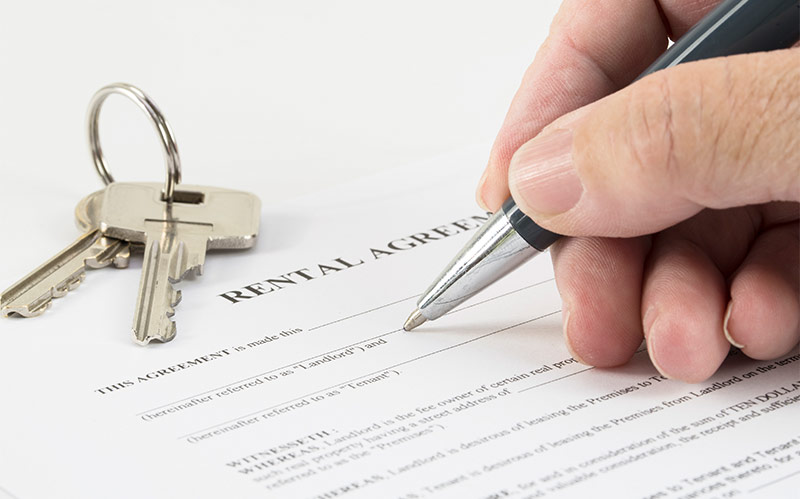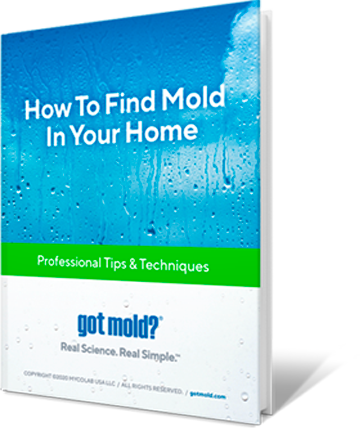
No matter whether you rent or own, your home should be where you feel safest. It should be where you rest and rejuvenate. It’s a place where you take care of yourself and those you love.
When you own your home and think you have a mold problem, in most cases, it’s simply a matter of figuring out the why’s and how’s, and then getting it taken care of, assuming it’s within the budget.
When you rent, though, it’s a whole different ball of wax. Your landlord will likely need to be involved, and that’s where things can start to get messy. The first decision is whether or not to do testing, and if so, who’s paying for it. In my decades as the owner of a leading mold inspection company, renters would call us all the time to get prices, hoping their landlord would spring for the inspection, only to be disappointed to find out that the landlord would rather just send in the maintenance crew to either rip it out or paint over it. Neither is an acceptable first step for a potentially significant mold issue nor do they get to the heart of the matter, which is locating the source of the moisture. Mold, after all, is a moisture problem.
Alternatively, your landlord may bring in their own mold “expert” to take a look, rarely taking samples or performing a comprehensive inspection. Often, the purpose of these so-called experts is to simply help the landlord figure out why this is all your fault or to find a cheap solution, which is probably not a solution at all. In these instances, the ideal path to resolution, where proper remediation is planned and executed, is rarely the landlord’s goal.
So, when you’re in this situation, what can you do? Call the Department of Health? Unfortunately, the DOH isn’t usually helpful in the beginning stages. Occasionally your Local Housing Authority will go to bat for you, but it depends on where you’re located. Should you get a professional inspection done, which may cost more than a month’s rent? It depends. In some cases it makes sense, assuming you can swing it, especially if you have an apathetic landlord or the mold problem is severe and putting your health at risk.
The most important first step is knowing your rights as a renter. The laws are different from state to state, so do your own research or consult an attorney, but in most jurisdictions, there’s a legal doctrine known as the Implied Warranty of Habitability (“IWOH”). In essence, what this means, is that your landlord has an obligation to provide housing that is fit and habitable. What’s interesting is that you’ll see no language in the lease about this, hence the reason it’s called the implied warranty of habitability. It’s a given and it need not be explicitly said in the rental agreement. People renting out housing have certain fundamental obligations.
How do you define fit and habitable? The unit/building has to be substantially compliant with state and local building and health codes. Above all, the rental unit must not have conditions that would be a threat to the health and safety of the tenants. It’s pretty simple.
Issues that may cause you to invoke the warranty of habitability may be as simple as appliances that aren’t functional, or as severe as gaping holes in your roof or broken windows, exposing you to the elements. Significant leaks and mold are potentially just as serious. Since most people reading this are worried about mold, let’s focus on that.
It has been said that common sense is not so common, so I will say this even though it’s as basic as you get. When you’re dealing with a mold problem, you’re actually dealing with two issues; the moisture source, and the mold. One causes the other, and if you don’t correct the underlying water problem, the mold will most assuredly return. This is why so many landlords get into trouble with mold. They spray some bleach or slap on a coat of paint, only to see it return again. It can be very frustrating to deal with this approach as a tenant, especially if someone in the house is having his or her health affected by the mold. So what do you do?
- Document, document, document: Get a notebook and keep detailed notes on every interaction with your landlord and building staff regarding your apartment and the issue(s) at hand. Every conversation, every time maintenance attempts or performs a repair. Dates, times, names, etc. This is very important, especially if this drags on for a long time. If you ever have to go to court, that notebook will be your best friend.
- Protect yourself: If where you live is a threat to your health, you need to pull out all the stops. First, talk to your doctor. Explain what’s going on. They may tell you to move, which you may have to consider. If not, it often helps to have them write a letter that clearly states that you, or the person you’re caring for, has a medical condition that is exacerbated by mold exposure. People with more serious health problems, like a compromised immune system, cannot live in a moldy environment under any circumstances. A strongly written letter from your physician gives you a lot of leverage, especially if you have to go to court at some point. If you choose to stay and see it through, get yourself a good air purifier or two to reduce exposure. You don’t have to spend a fortune. Here are some units we like a lot. Also, if you can, consider relocating temporarily, although I know that’s not often practical or possible.
- Notify the landlord in writing: In addition to the contemporaneous notes, when you have a repair or maintenance issue, and your landlord has proven to be unresponsive or dismissive after a verbal request, you must put your request in writing. There’s no hard and fast rule about how many times or how often you should request something be taken care of before you escalate things, but I feel that three letters are enough. The first one is friendly. The second one reminds them of the first one and reiterates your request and concern. If someone seems to be getting sick from the mold, you must say so. The third one lets them know what you’ll be doing next.
- Seek legal counsel: Find a local attorney with landlord-tenant dispute experience. There are non-profit law firms in some areas that specialize in things like this. Sometimes they can point you toward free government resources, which can make all the difference in the world.
- Consider getting an inspection & testing done: It’s often a good idea to get a proper inspection done, with testing, to make sure you’re not off-base, and also to make it clear to your landlord that you’re serious about the situation. You can easily get into arguments about how bad it is or isn’t, but until you have real data and a report from a qualified professional, it’s simply a matter of opinion. Also, the byproduct of a proper inspection is a remediation plan which tells the building owner exactly how it needs to be done, according to the industry standard and/or any regulations which may exist in your area. This will usually wake them up to the reality that they shouldn’t attempt to do the work themselves. It can save a lot of back-and-forth and wasted effort on everyone’s part, not to mention preventing things from getting worse due to a botched mold cleanup. Don’t ever expect, or even ask, for your landlord to pay for an inspection up front, because one of two things will happen. First, they’ll say no. Second, they’ll hire someone who will tell them what they want to hear and beat you to the punch. Don’t waste your time. Your best bet is to try to get a reimbursement after the fact. The old adage that it’s better to ask for forgiveness than permission applies here.
- Withhold rent: Landlords want to get paid. The good news about the IWOH is that it’s a two-way street. They maintain a fit and habitable place for you to live, and you pay rent. If they fail to keep up their end of the bargain, you don’t pay. At least not right away. This is where things get complicated because every jurisdiction has different laws about this. Some allow you to withhold rent and then argue at an eviction hearing about all of the things they didn’t do, which sounds like a nightmare to me, and a risky proposition. Other towns and cities allow for you to pay the rent to the Clerk of the Court or into an escrow account, releasing funds to the landlord only when the unit is deemed fit and habitable. Here’s a link to a piece about this rather murky subject. Do your research. This is often the most powerful tool in your toolbox if you do it correctly. If you play by the rules, you’ll be amazed how quickly they usually rally.
- Evict yourself: If you’re fed up, or just looking to get out of the lease, and move on, once you’ve withheld rent and they’re not cooperating, there’s something called constructive eviction, where you essentially terminate the lease without penalties or being subject to the rest of your obligations under the lease agreement, based upon the landlord’s failure to comply with the IWOH, among other things.
The reality is that most landlords are just starting to realize how serious mold can be, and the liability that comes along with deferred maintenance. You’ve probably heard that cheap people pay twice, and landlords often fall into that camp. Don’t be surprised if it’s an uphill battle, but if you handle everything right, you will usually prevail. The most important thing to remember is that it’s your home, even if you don’t own it, and there are things you can and must do to protect yourself and your family. There are resources available to you that give you more power than you can imagine. Get out there and use them to their fullest.
DISCLAIMER: I am not a lawyer. I’ve never even played one on TV. This is not legal advice, and should not be construed as such. I’m just sharing my experience here. When in doubt, consult an attorney.

